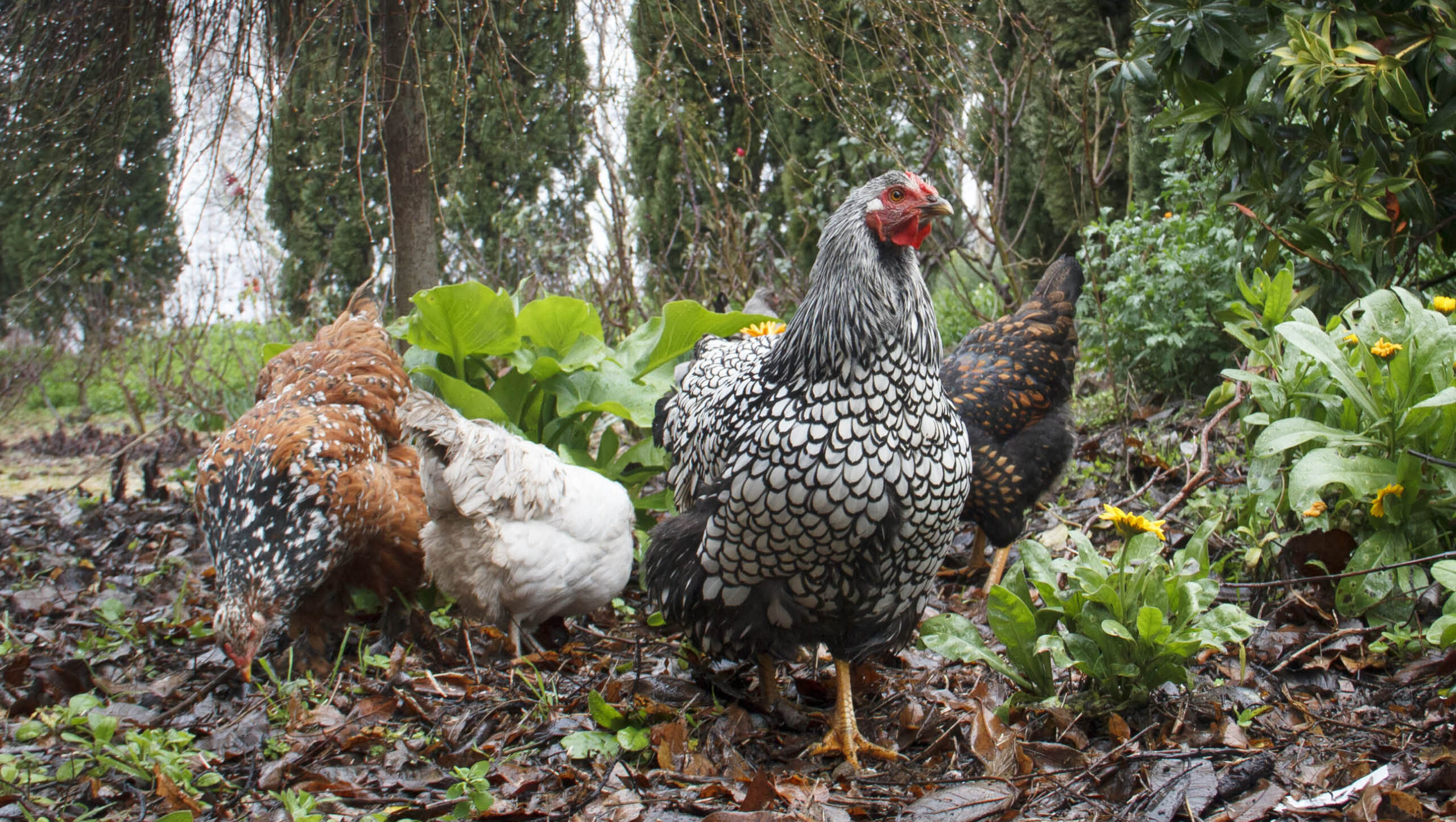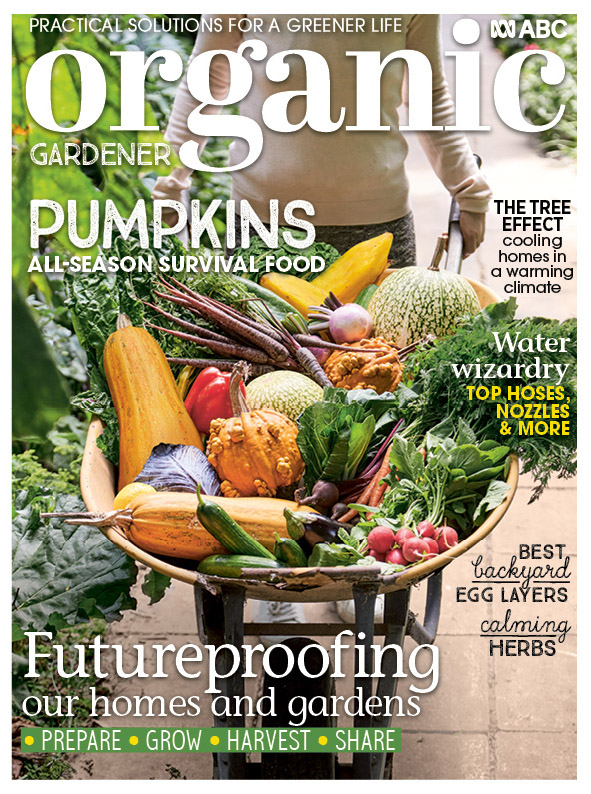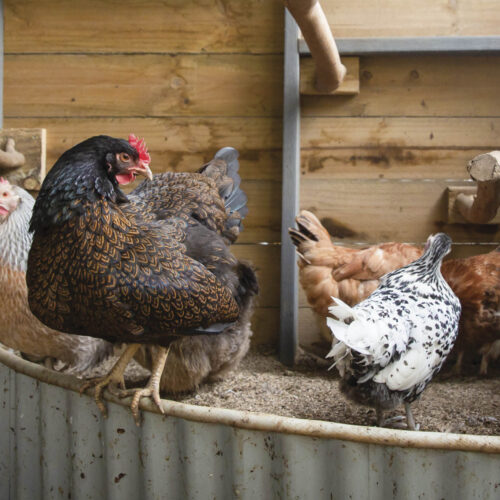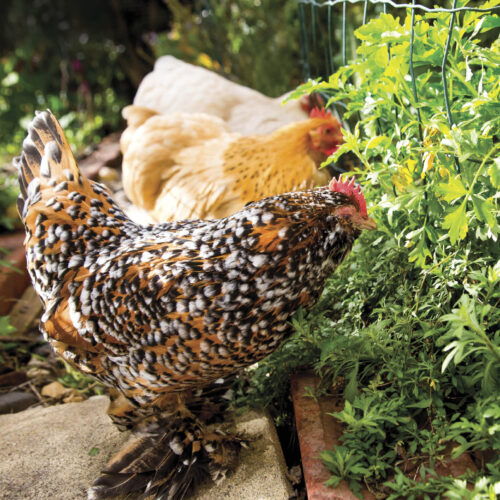Wet-weather proof your poultry
2024-06-03T06:37:00+10:00
While ducks may enjoy downpours, backyard poultry are not so happy. Our chook expert, Jessamy Miller, has some tips to take care of your feathered friends.
La Nina has brought wet weather to many parts of Australia in past months. While the ducks may be rapt, chooks are not suited to rainy conditions. Their feathers are less waterproof so they can become wet and chilled, they can be affected by waterborne bacteria and disease, and their daily activities of scratching and foraging are severely curtailed. Here are some tips to keeping them happy and healthy despite the downpours.
Health care
Long-term wet weather poses a threat to fowls’ health. The greatest concern is botulism, which can cause paralysis and death. Conditions where botulism may occur include damp soil, standing water and puddles containing decaying plant or animal matter. Intestinal worms and coccidiosis-causing protozoan parasites can also multiply in damp conditions.
Make sure clean water is readily available, but be aware chooks may perversely drink from the dirtiest natural source in the area. Fill puddles and wet areas with sand, gravel, tanbark or similar. If this isn’t possible, fence the flock away from saturated ground and standing water.
Warm, damp wet weather conditions may lead to mould contamination of food and the environment. Mould can produce fungal toxins called mycotoxins that are harmful to poultry. Be sure to keep all feed in sealed containers out of reach of moisture so it does not become spoiled. Mould-affected feed should be thrown out. Don’t leave uneaten food scraps in the poultry run to rot, move them to the compost bin within a day or so, and keep chooks away from compost.
In the henhouse
Remain vigilant in the henhouse and remove any damp patches in bedding so conditions remain dry and healthy. Be particularly careful to remove any mouldy litter, and wipe mould spores off surfaces with hot water and vinegar. A balance is required between keeping the henhouse well ventilated to avoid condensation build-up, but at the same time exclude rain and drafts; installing mesh-covered clerestory windows under generous eaves is one solution.

If chooks are free ranging, they may tramp mud into nestboxes on their feet, leaving insanitary conditions for eggs. Clean out nests regularly, and heap dry litter in the surrounding area to help wipe off legs.
Slippery conditions
A wet muddy poultry run is an eyesore, can become smelly, is slippery and dangerous for humans, and is no use to chooks. Line the run with tanbark, wood shavings, gravel or peastraw to absorb moisture and provide traction.
Fowls need daily exercise and stimulation or they can become bored and resort to bad habits like repetitive pecking. They will appreciate an undercover area with dry ground for scratching and dustbathing.
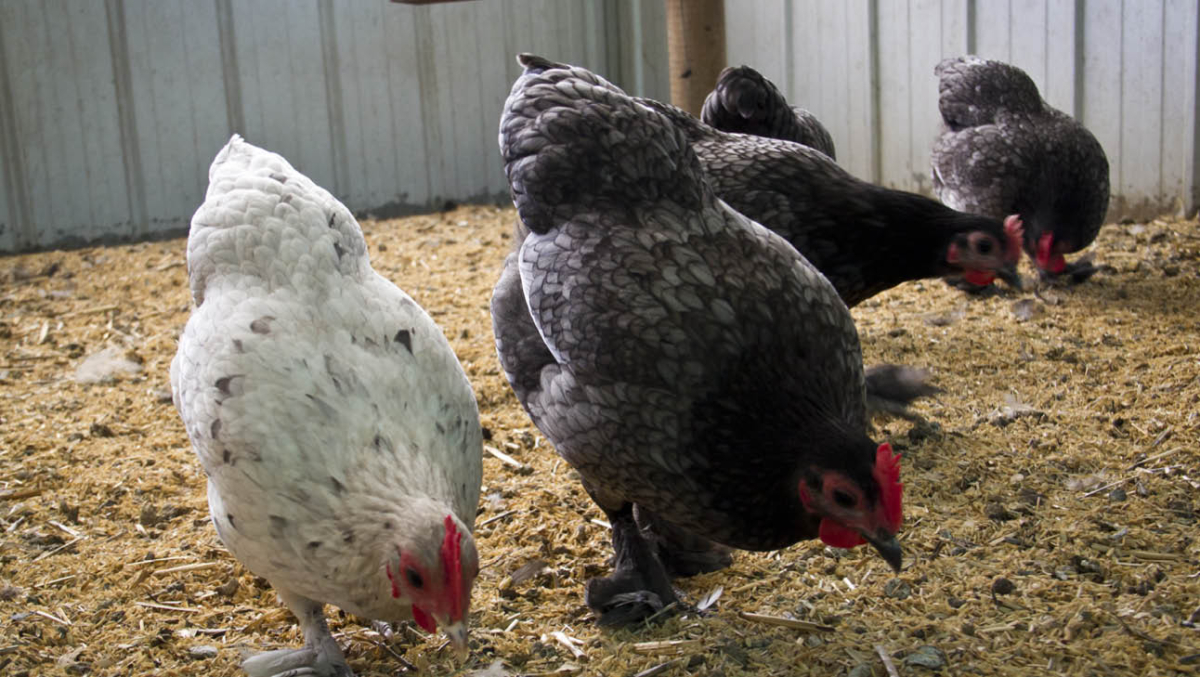
You could repurpose an old trampoline as a cover, install a Lazerlite shelter they can preen under, or set up a dustbath in a tyre or sandpit in the henhouse. If chooks have to be confined all day, provide plenty of environmental enrichment to keep them busy: hang silverbeet or other greens, install peck toys, add a mirror, or give them a ‘biscuit’ of peastraw to scratch and peck.
Health booster
Keep an eye on chooks for signs of ill health or failure to thrive and consult the vet if needed. You may like to supplement the flock’s diet with one of the poultry-specific multivitamin and mineral supplements available from online poultry stores. Some are water soluble, others are offered in a carrier like yoghurt. This will ensure birds have a strong immune system able to fight any health challenges. It will also ensure hens are in fit condition for spring, their peak laying season!
Jessamy Miller is our go-to chook expert and she writes about a wide range of topics, such as which hens are the best backyard layers that appeared in our Early Summer 2022 issue (OG 137). You can get more organic growing and living ideas here!

